- Blog
- The Ultimate Guide to DTC Marketing in 2025
The Ultimate Guide to DTC Marketing in 2025
-
Nikolett Lorincz
- Marketing
- 6 min read
Table of Contents
With so many brands cutting out the middleman and going direct to consumers, it can be hard to figure out how to stand out or even where to begin. Maybe you’re tired of dealing with third-party retailers eating into your profits or losing control over your brand messaging.
Whatever the reason, you’re here because you want to know how to build a successful DTC marketing strategy.
In this article, we’ll walk you through exactly what DTC marketing is, why it’s booming, and, most importantly, how you can apply successful strategies to grow your brand.
Let’s get started!
What is direct-to-consumer marketing?
Direct-to-consumer (DTC) marketing is exactly what it sounds like—brands sell their products directly to consumers without relying on third-party retailers or intermediaries.
Unlike traditional retail models where a product goes through a chain of distributors, wholesalers, and brick-and-mortar stores, DTC brands cut out the middleman and sell straight to the customer through their own digital channels.
This model gives DTC brands more control over their customer experience, pricing strategies, and marketing strategies.
It also allows them to collect valuable customer data, which can be used to tailor marketing efforts and build stronger, personalized relationships with their target audience.
Why is DTC booming?
DTC is booming—and not by accident. Here are several reasons why this business model is taking off.
1. Changing consumer behavior
Consumers’ shopping habits have undergone a massive shift, especially in recent years. The rise of online shopping has been accelerated by the pandemic, with many shoppers now preferring the convenience of buying directly from brands online rather than visiting retail stores.
This shift is driven by several factors: the ease of browsing and purchasing from home, quick delivery options, and the ability to research products online before making a decision.
DTC brands are perfectly positioned to cater to this new wave of digital-first shoppers by offering streamlined online experiences, fast shipping, and customer-friendly return policies.
2. More control over branding and pricing
One of the biggest benefits of the DTC model is control. Traditional retail models require brands to rely on third-party retailers to sell their products, often diluting the brand message or limiting how products are displayed.
With DTC, brands own every aspect of the customer experience, from the website design to the product packaging.
By cutting out the middlemen, DTC businesses can also set their own prices without worrying about a retailer marking up costs or dictating discounts. This pricing flexibility enables brands to offer competitive pricing or invest more in premium product quality, all while maintaining healthy profit margins.
3. Access to customer data
In traditional advertising, customer data is usually inaccessible to brands. When products are sold through third-party retailers, brands miss out on valuable insights about who’s buying their products and how they’re shopping.
DTC brands, on the other hand, interact directly with their customers and capture data at every touchpoint—from browsing patterns on the website to purchasing behaviors and email engagement.
This rich data is gold for marketers. It allows brands to create personalized marketing campaigns, recommend products based on individual preferences, and continuously optimize the shopping experience.
4. Loyalty through personalization
Personalization is at the heart of the DTC model.
Since DTC brands have direct relationships with their customers, they can offer highly tailored experiences that build loyalty. Personalized emails, custom product recommendations, early access to product launches, and VIP programs all help DTC businesses stand out and foster a deeper connection with their audience.
This personal touch creates a sense of community, where customers feel valued as individuals rather than just another order number. As a result, DTC brands often enjoy higher customer retention rates and word-of-mouth marketing, as loyal customers become brand advocates.
5. Lower barriers to entry
The barriers to starting a DTC brand have never been lower, thanks to affordable and accessible ecommerce platforms like Shopify, BigCommerce, and WooCommerce. These platforms provide everything needed to launch an online store quickly and efficiently, from website templates to inventory management systems.
Digital marketing channels like Facebook, Instagram, and TikTok ads also offer cost-effective ways for DTC brands to reach their target audience without the need for massive marketing budgets.
This makes it possible for entrepreneurs to launch new brands with minimal upfront investment compared to opening a brick-and-mortar store.
10 DTC marketing strategies
If you’re thinking of launching or scaling your DTC brand, you’ll need a smart DTC marketing strategy.
Here are ten proven tactics to help you connect with your target audience, grow your brand, and boost your revenue.
1. Focus on social media marketing
Social media platforms like Instagram, Facebook, TikTok, and even Pinterest are where many DTC brands thrive. These platforms give you the opportunity to engage with your audience directly through content that resonates with them.
Make sure your content is visually appealing and shareable. For example, Instagram is perfect for showcasing lifestyle photos of your product:
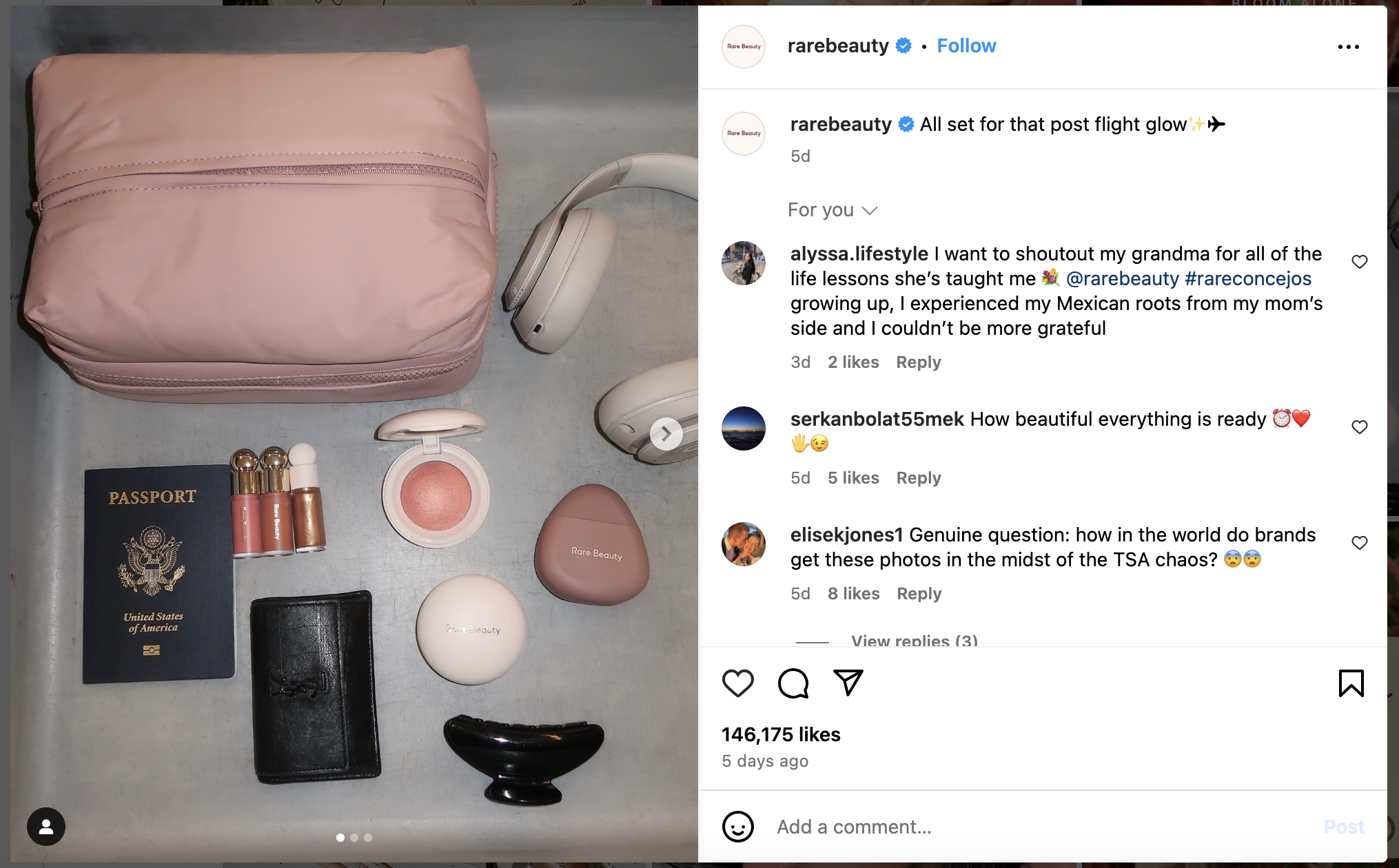
On the other hand, TikTok can be used for fun, quick videos that show your product in action.
@rarebeauty Aint no way he put liquid blush there 😤 If you try this new filter, don't forget to tag us! Shoutout @Makeup2themaxx 💜 for creating it for our 4th birthday 🎂 #RareBeauty #rankingfilter #liquidblush #filter #makeupranking #guyranksmakeup #rarebeautyfilter #rankrarebeauty #fullfaceofrarebeauty #rankingfilter ♬ original sound - Rare Beauty
Pro tip: Stay active on stories and reels. These short-form video formats get high engagement and help you stay top-of-mind without overwhelming your followers.
2. Use paid ads strategically
While organic growth is valuable, paid ads are essential for scaling quickly. Platforms like Facebook, Instagram, and Google Ads allow you to hyper-target your ads to reach the exact audience you want.
Paid advertising helps you get your products in front of people who are most likely to convert. Think of strategies like interest-based targeting, lookalike audiences, or retargeting.
Track your ad performance regularly and optimize your campaigns to reduce costs and increase conversions. Consider running A/B tests on your ad copy, images, and targeting to see what resonates most with your audience.
Pro tip: Use video ads whenever possible. Studies show that video content generates higher engagement and conversion rates compared to static images.
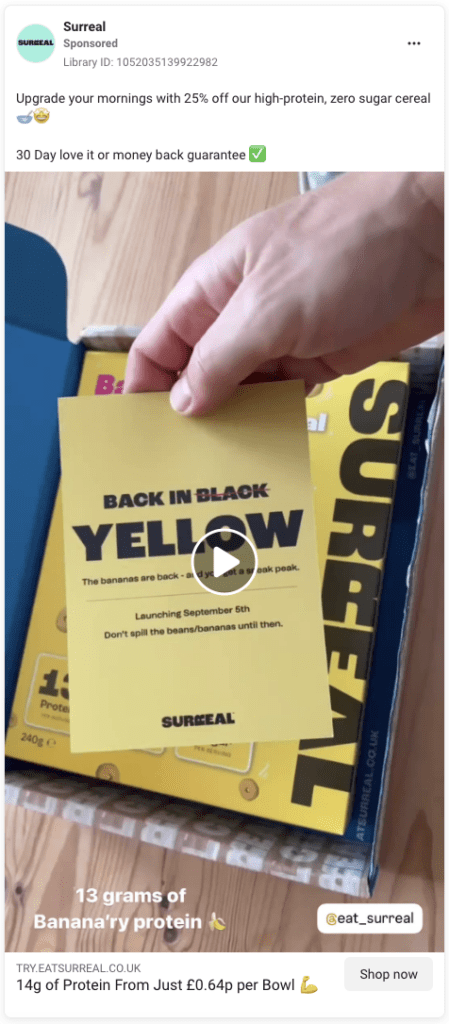
3. Invest in SEO
SEO is crucial for driving organic traffic to your website. If your DTC brand doesn’t appear in search engine results when customers are looking for products like yours, you’re leaving money on the table.
Start by identifying the keywords your customers are using and incorporate them into your website’s content, product descriptions, blog posts, and meta tags.
SEO is a long-term investment, but it pays off by bringing free, high-intent traffic to your site. Don’t forget about optimizing for local SEO if you have physical store locations or if you’re targeting a specific geographic market.
Pro tip: Focus on both product and informational keywords. For example, Caraway ranks not only for “caraway cookware” and “caraway pans” but also for “best cookware for glass top stoves” and “is ceramic cookware safe.”
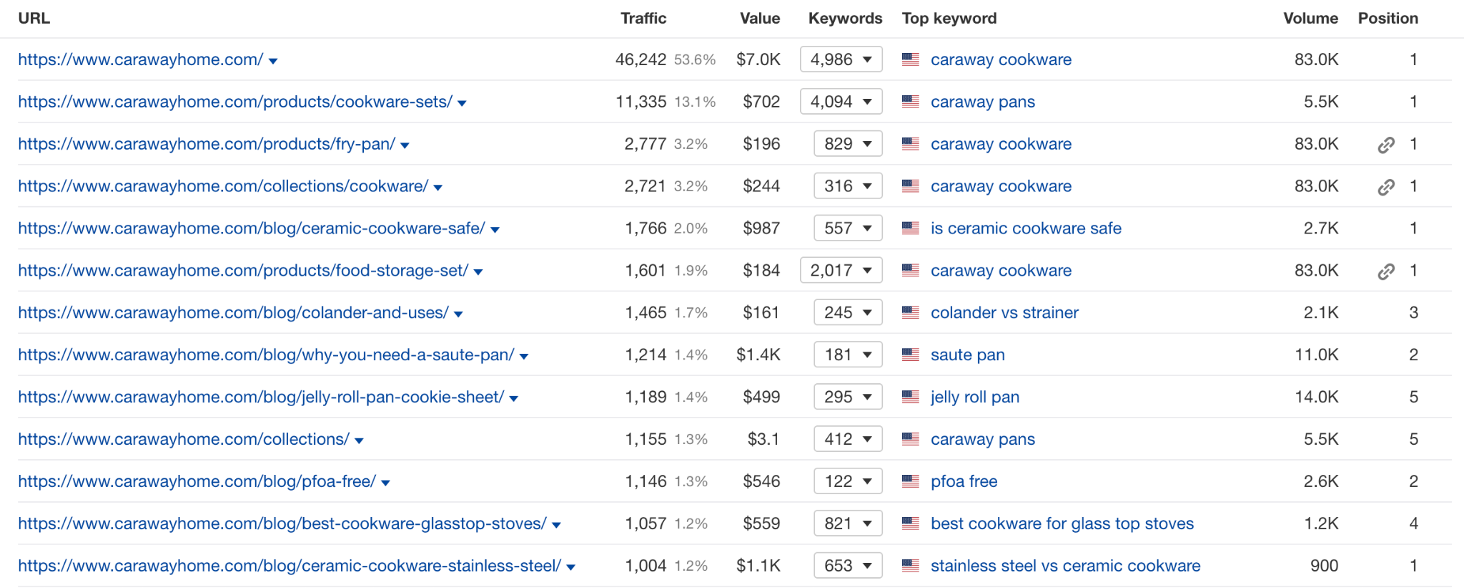
4. Create a seamless customer experience
Nothing turns potential buyers away faster than a clunky website. Your online store should be intuitive, fast, and easy to navigate. Optimize your product pages with high-quality images, clear descriptions, and customer reviews to help shoppers make informed decisions.
Make sure your checkout process is smooth and free of friction—this includes offering popular payment options like Apple Pay, Google Pay, and PayPal.
And don’t forget about mobile users! The majority of online shopping is now done on mobile devices, so your site needs to be mobile-friendly.
Pro tip: Free shipping is often a deal-breaker. Consider offering it for orders over a certain threshold to encourage higher average order values. Make sure you’re communicating this free shipping threshold on your website with a sticky bar.
5. Build a segmented email list
Successful DTC brands all use email marketing, but a one-size-fits-all approach won’t cut it. By segmenting your email list based on customer behavior—such as past purchases, browsing habits, or signup source—you can send personalized campaigns that are much more likely to convert.
For example, send new customers a welcome series that highlights your brand story and offers a discount on their first purchase. For repeat buyers, send tailored product recommendations or early access to new releases.
Segmentation ensures that you’re delivering the right message to the right person at the right time.
Pro tip: Use popups on your website to capture email addresses in exchange for discounts or special offers.
6. Embrace content marketing
Content marketing helps you establish your brand as a trusted authority in your industry. Whether it’s through blog posts, how-to videos, or product tutorials, the goal is to provide valuable information that helps your customers solve a problem or achieve a goal.
Content also plays a huge role in driving organic traffic and boosting your SEO efforts.
For example, a beauty brand might create blog content about skincare tips, while a fitness brand could produce workout videos. The key is to create content that resonates with your audience and adds value.
Pro tip: Leverage user-generated content (UGC). Encourage customers to share photos or reviews of your products and feature them on your website or social media channels.
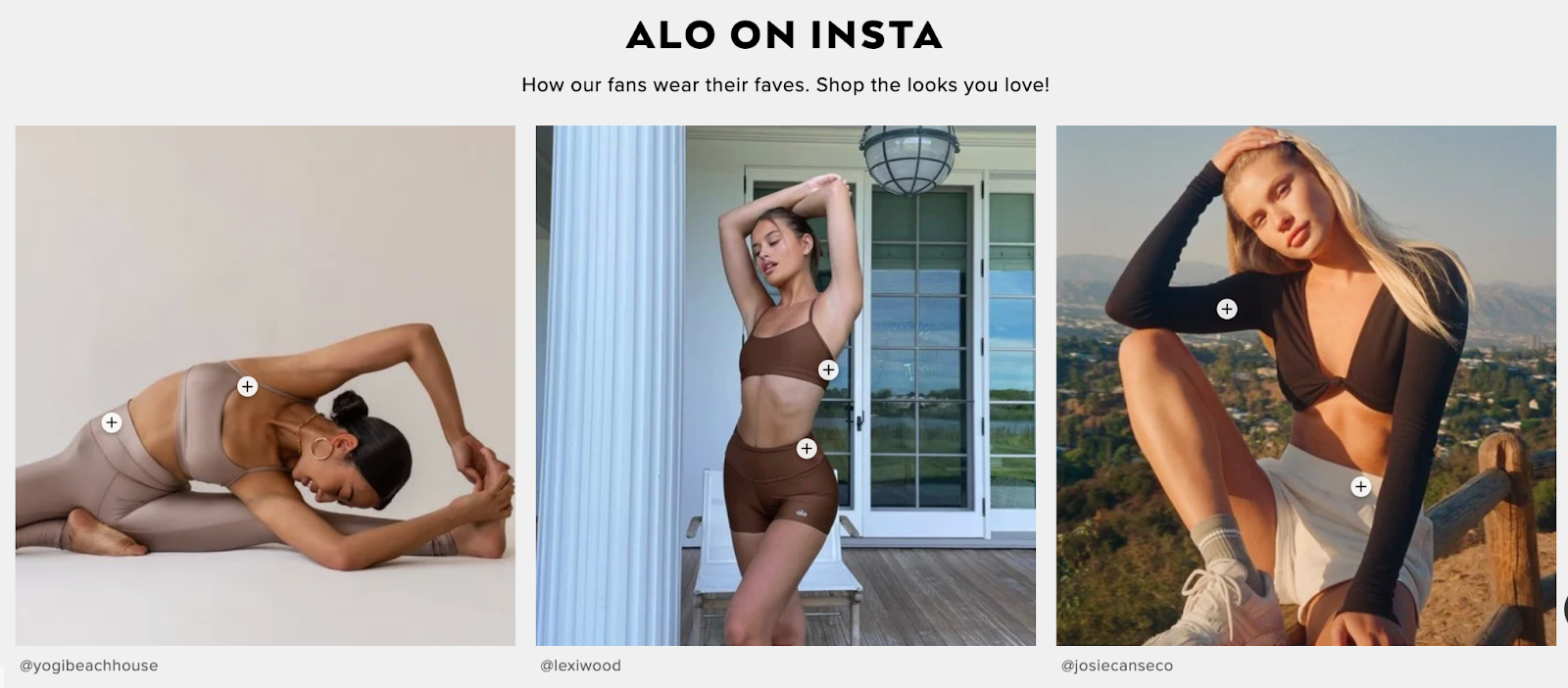
7. Use retargeting campaigns
Retargeting is a powerful way to re-engage potential customers who have already shown interest in your products.
Let’s say someone visits your site, adds a product to their cart, but doesn’t check out. With retargeting, you can serve them an ad reminding them about the item they left behind.
You can also retarget users who viewed specific product pages or who’ve engaged with your brand on social media. These customers are already familiar with your brand, which makes them more likely to convert compared to cold traffic.
Pro tip: Retargeting ads that feature product reviews or limited-time offers can create urgency and increase conversions.
8. Offer subscription services
Subscription models are a great way to increase customer lifetime value and build long-term relationships with your customers. Not only do subscriptions offer convenience for your customers, but they also create a predictable revenue stream for your business.
Brands like Dollar Shave Club and BarkBox have built their entire business models around subscriptions.
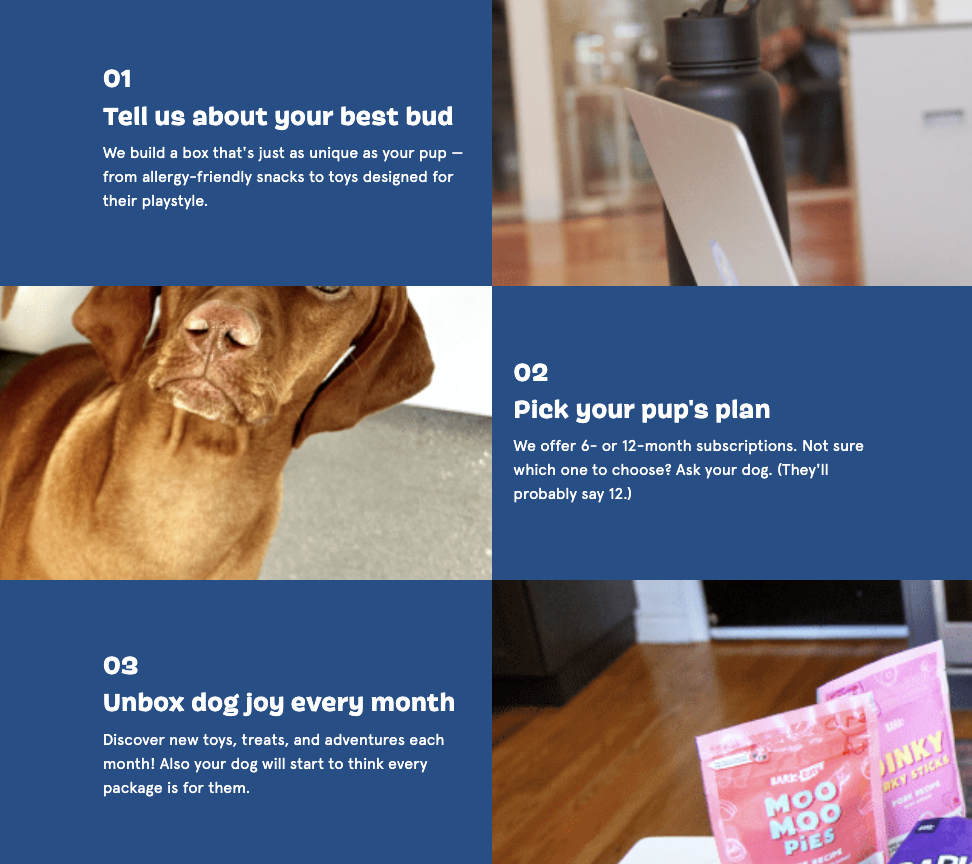
Whether you offer a recurring delivery of consumable products or access to exclusive content or perks, a subscription service can keep your customers coming back.
Pro tip: Offer flexible subscription options, such as the ability to skip a delivery or pause their subscription, to reduce churn.
9. Utilize data to personalize marketing
As a DTC brand, you have direct access to customer data. Use this to your advantage by creating personalized marketing campaigns.
From personalized email recommendations based on past purchases to tailoring website content based on browsing behavior, personalization increases engagement and conversion rates.
Data-driven marketing also helps you better understand your customers’ preferences, allowing you to make informed decisions about product offerings, pricing, and promotions.
Pro tip: Use product recommendation popups on your site to suggest relevant items to shoppers.
10. Collaborate with influencers
Influencer marketing can be a game-changer for DTC businesses, especially when working with influencers whose audiences align with your target consumers. Influencers bring credibility and social proof, helping you reach new customers through authentic recommendations.
Instead of focusing solely on influencers with massive followings, consider working with micro-influencers who may have smaller, more engaged audiences. This often leads to better conversion rates and stronger customer relationships.
Pro tip: Create long-term partnerships with influencers to keep your brand top-of-mind and build deeper connections with their audience.
5 examples of successful DTC brands
Now, it’s time to take a look at a few DTC companies that have nailed this model for inspiration.
1. Warby Parker

Known for its stylish eyewear and try-at-home service, Warby Parker shook up the traditional eyewear market. They focus heavily on customer experience, offering affordable prices and personalized shopping options.
Recommended reading: How Warby Parker Reached a $3 Billion Valuation and Became an Ecommerce Giant
2. Glossier
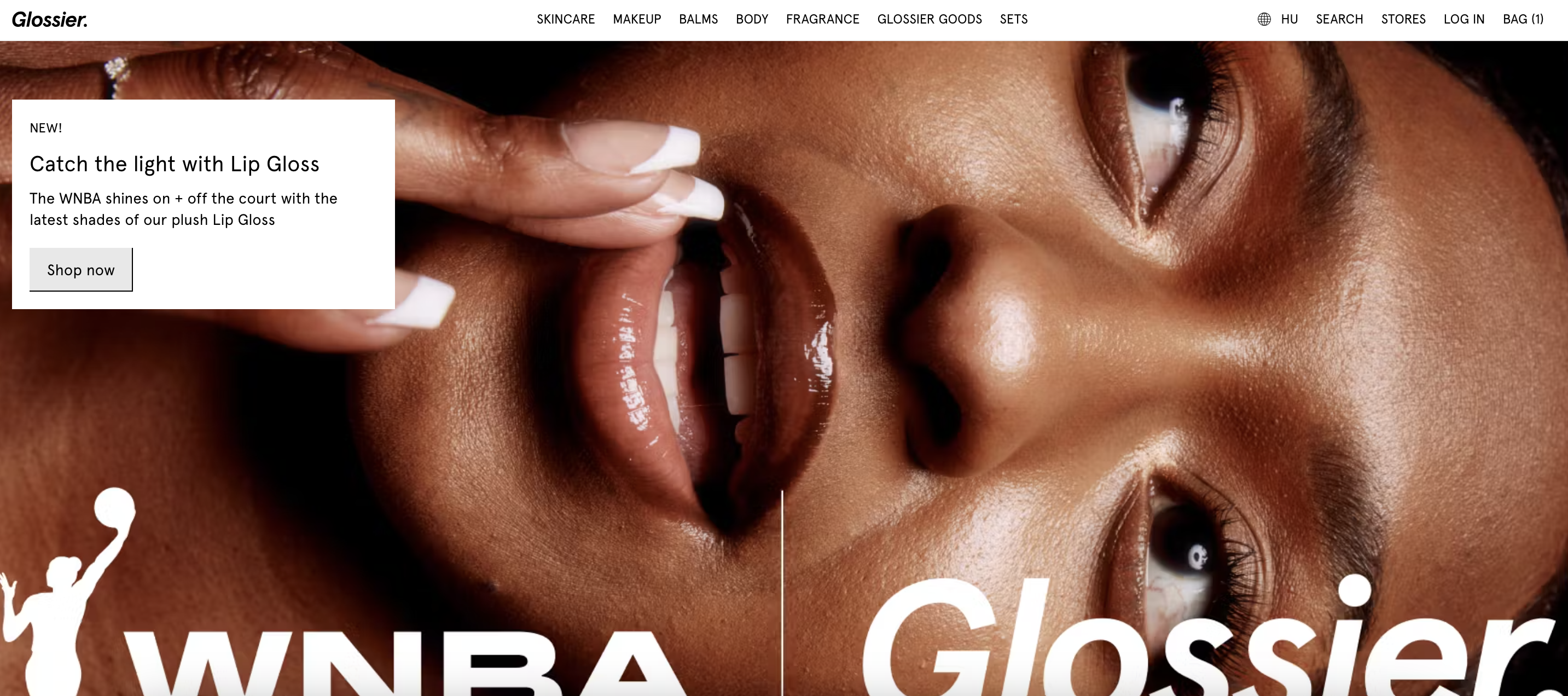
Starting as a beauty blog, Glossier turned into a DTC sensation by listening to their community and creating products based on customer feedback. Their social media strategy is a masterclass in building a loyal, engaged audience.
Recommended reading: Glossier Marketing Breakdown: How This Beauty Brand Became a $1.2 Billion Company
3. Dollar Shave Club
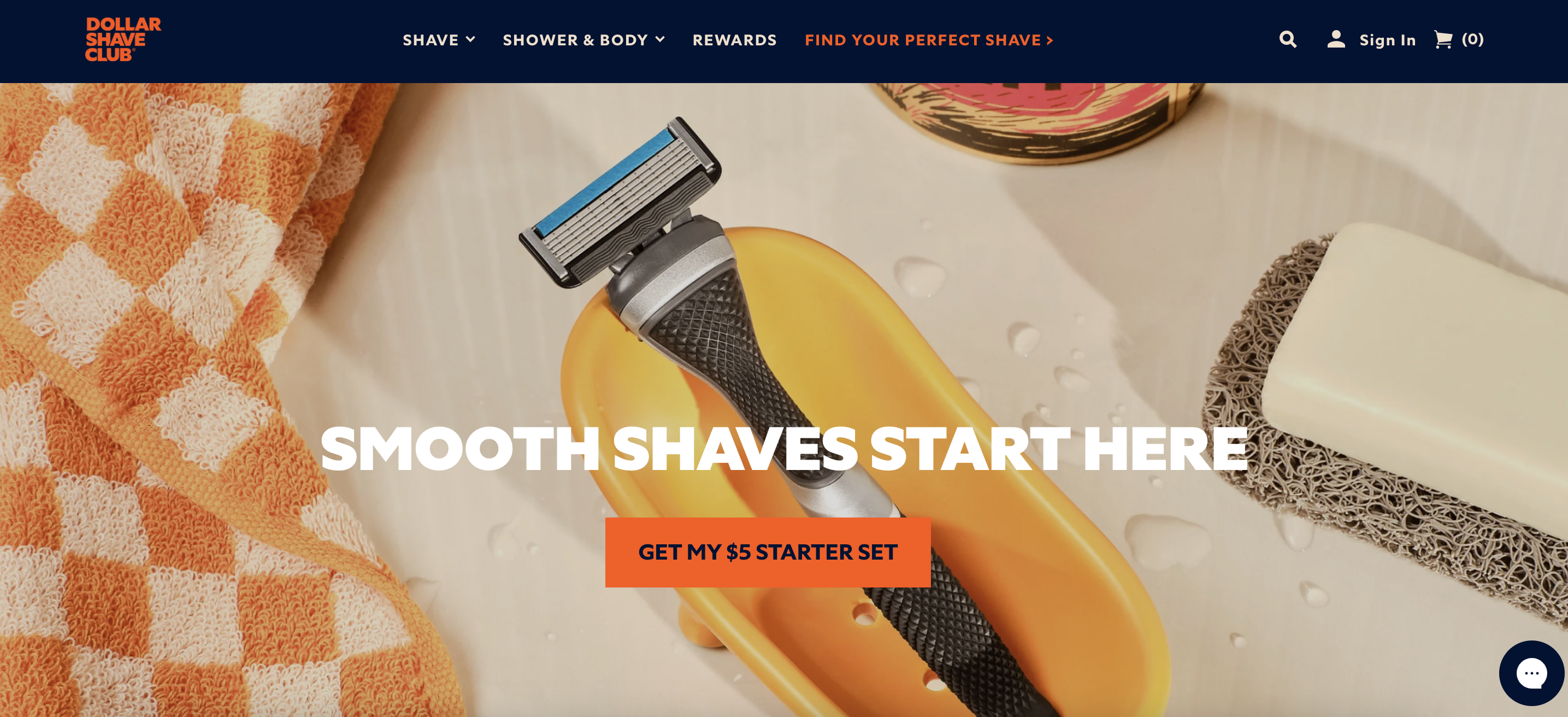
With humorous, memorable ad campaigns, Dollar Shave Club redefined men’s grooming. They built their business on a subscription model, delivering razors to customers’ doors at a fraction of retail prices.
Recommended reading: Dollar Shave Club Marketing Success: From Viral Video to Billion-Dollar Company
4. Allbirds
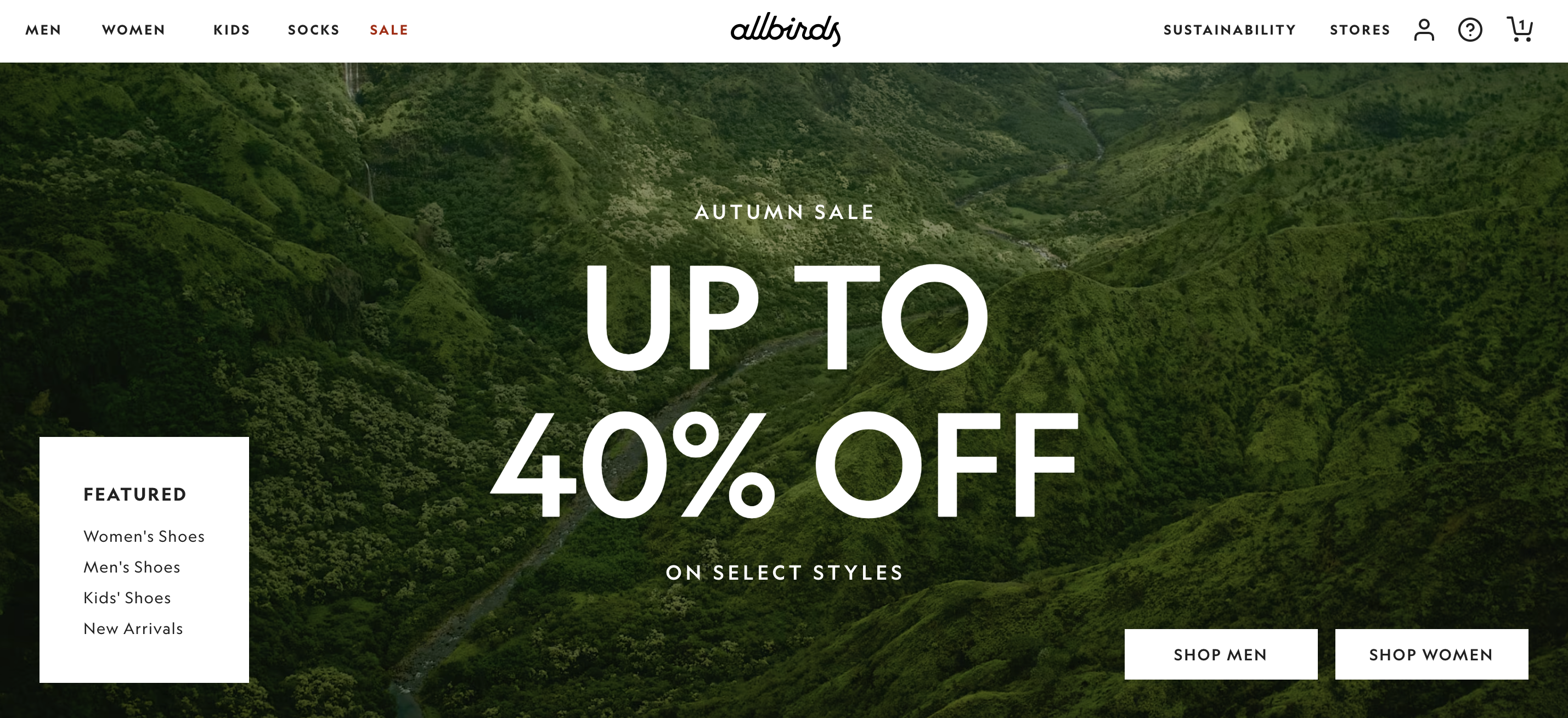
This eco-friendly shoe brand mastered content marketing and customer loyalty by focusing on sustainability. Their simple, direct messaging speaks to modern consumers looking for ethical brands.
Recommended reading: Allbirds Marketing Breakdown: How They Went from a Small Startup to a Billion-dollar Sneaker Brand in 4 Years
5. Casper
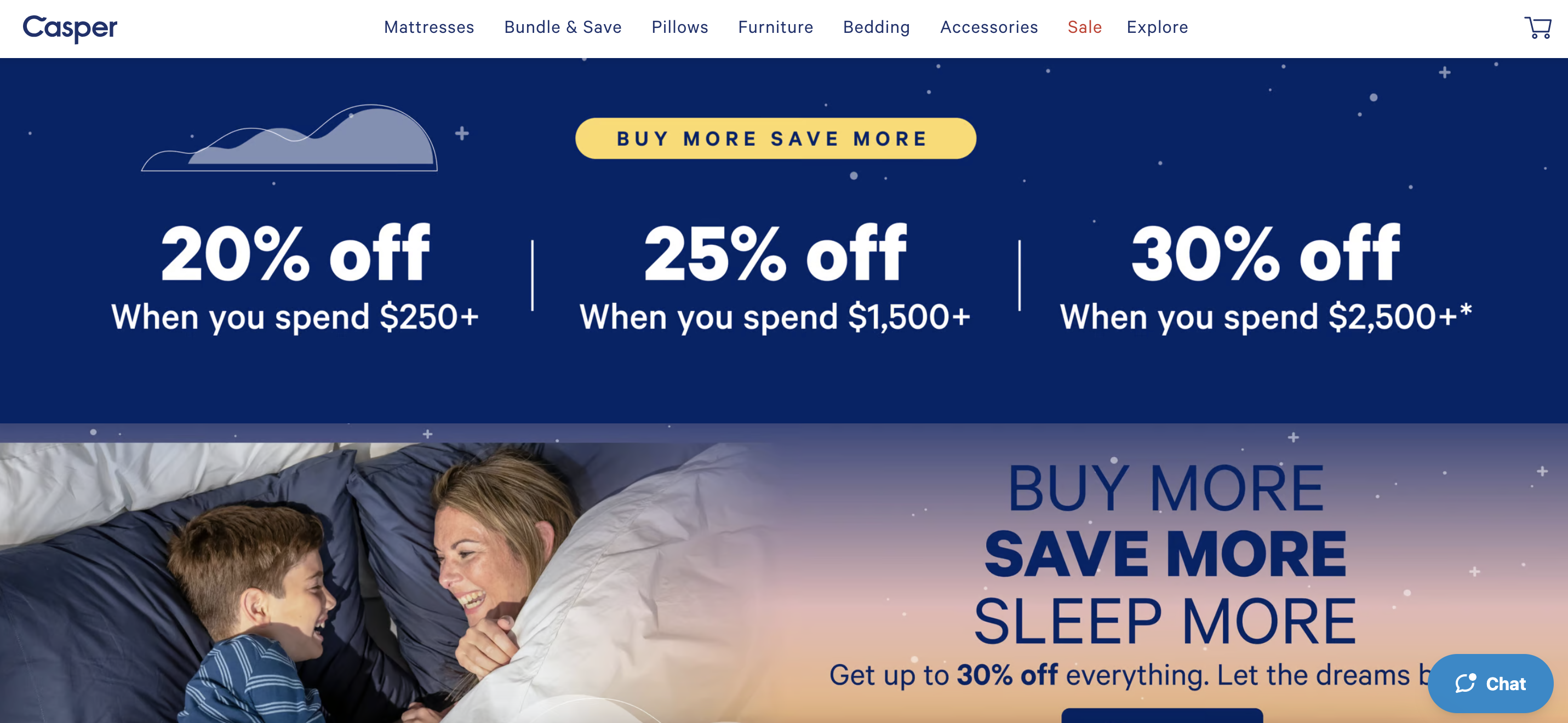
The mattress brand Casper disrupted the sleep industry by selling mattresses online with a no-fuss return policy. They leaned into content marketing with sleep guides and podcasts, proving their dedication to customer well-being.
Recommended reading: Casper Marketing Breakdown: How Casper Took The Mattress Industry By Storm And Reached a $1.1 Billion Valuation
Wrapping up
The direct-to-consumer marketing model is transforming how ecommerce brands interact with customers and drive growth. From taking control of the entire supply chain to building stronger customer relationships, DTC marketing is about owning your brand’s story and delivering an exceptional experience.
Whether you’re starting a new venture or scaling an existing one, leveraging DTC marketing strategies can propel your brand forward.
The key is to focus on personalized, authentic customer connections—because in the end, that’s what DTC marketing success is all about.
Migration has never been easier
We made switching a no-brainer with our free, white-glove onboarding service so you can get started in the blink of an eye.

What should you do next?
Thanks for reading till the end. Here are 4 ways we can help you grow your business:
Boost conversions with proven use cases
Explore our Use Case Library, filled with actionable personalization examples and step-by-step guides to unlock your website's full potential. Check out Use Case Library
Create a free OptiMonk account
Create a free OptiMonk account and easily get started with popups and conversion rate optimization. Get OptiMonk free
Get advice from a CRO expert
Schedule a personalized discovery call with one of our experts to explore how OptiMonk can help you grow your business. Book a demo
Join our weekly newsletter
Real CRO insights & marketing tips. No fluff. Straight to your inbox. Subscribe now
Nikolett Lorincz
- Posted in
- Marketing
Partner with us
- © OptiMonk. All rights reserved!
- Terms of Use
- Privacy Policy
- Cookie Policy
Product updates: January Release 2025








